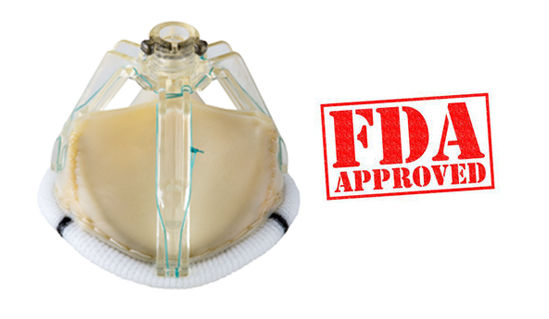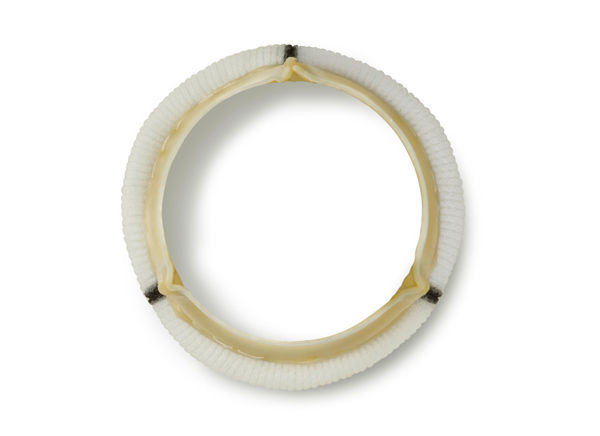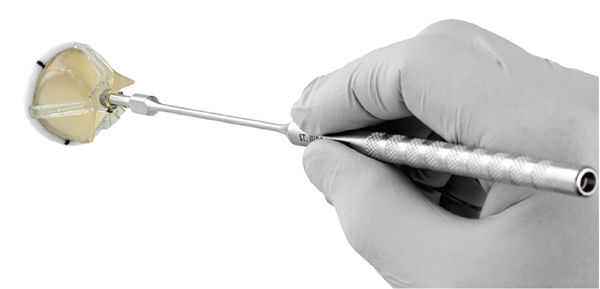Technology Update: Exceptional Hemodynamics & More Earn Trifecta GT FDA Approval; 7 Facts You Should Know
Written By: Adam Pick, Patient Advocate, Author & Website Founder
Page Last Updated: May 11, 2025
[Please note that Abbott, the manufacturers of the Trifecta GT aortic valve replacement, have stopped making the device due to an FDA warning about structural valve deterioration. To learn more, please click here.]
In case you missed it… The Trifecta Valve with Glide Technology (Trifecta GT) just received a U.S. Food & Drug Administration approval. This is really great news for patients given the unique advantages of this aortic valve replacement.

To learn more, I contacted Dr. Douglas Johnston. So you know, about 70% of Dr. Johnston’s cases includes valve therapy and Dr. Johnston has already implanted many Trifecta GT valves. In addition, Dr. Johnston has successfully treated several patients in our community including Sonny Abassi and Sandra Shaw. 🙂

1. What is your experience with the Trifecta and Trifecta GT heart valve replacement for patients with aortic valve disease?
Dr. Johnston Says: We have used the Trifecta valve for several years now, and have been impressed in particular with the low gradients (pressure across the valve) that result with the Trifecta even in small valve sizes. There is increasing evidence that higher valve gradients can have slow recovery of the heart after aortic valve replacement, and also may result in earlier valve failure. A valve with a more efficient design, like the Trifecta, results in lower gradients. This is of particular value in patients who have small aortas, where otherwise a more extensive procedure such as an aortic root enlargement might be necessary to implant a valve with appropriate gradients.
2. Can you talk about the recent FDA approval of the Trifecta GT? What should patients know about this new valve?
Dr. Johnston Says: The Trifecta GT is an improved version of the original Trifecta design. It includes a softer sewing cuff, which is the part of the valve which seals to the patient’s heart. This makes the valve somewhat easier to implant. In addition there is a stiffening ring at the base of the valve which makes the valve more resistant to distortion. All tissue valves are reliant on maintaining a particular geometry to function effectively, and so distortion at implantation can affect the performance. The stiffening ring should reduce the risk of this.
3. We’ve been hearing a lot about the “hemodynamics” of valve replacements. Can you please explain this term for patients?
Dr. Johnston Says: “Hemodynamics” refers to the characteristics of how blood flows through the valve. A normal human aortic valve is very efficient in terms of hemodynamics. When the valve is open there is almost no obstruction to blood flow, and when the valve is closed there is no backward leakage of blood. Replacement heart valves all have some compromise as compared to a human valve. Some very efficient types of valves which open widely and don’t interfere with blood flow, such as human cadaver valves (homografts) are more difficult to implant and especially more difficult and riskier to deal with when they fail.
Mechanical valves can be fairly efficient in terms of blood flow but all have a small backward leak which is designed to keep the valve free of clot – which is the major issue with mechanical valves – the requirement for lifelong anticoagulation.
Most animal tissue valves consist of 3 leaflets made of animal tissue which are mounted on a metal and / or plastic frame, which is then sewn to the patient. The frame and leaflet construction takes up some space, which results in some obstruction to the flow of blood across the valve. Different valves are more or less efficient for a given size based on how big the stent is and how they are constructed. Because the leaflets are on the outside of the stent, the Trifecta GT valve tends to be more efficient than some other valves especially at small sizes. Overall, we believe valves with better hemodynamics allow for faster recovery of the heart after valve replacement, and may correlate with longer valve life. The jury is still out on the latter. We are actively studying this.

4. How does a valve with great hemodynamics benefit patients?
Dr. Johnston Says: The most important effect of better hemodynamics is better recovery of the heart after surgery. Older patients tend to be tolerant of a valve with less than perfect hemodynamics, whereas younger patients who receive a valve that is too small, or has too high a gradient, have worse survival and faster valve deterioration. The effect of valve performance on exercise is less well studied, but it is clear that high performing athletes pump a lot of blood through the valve in a minute, and maximizing valve performance in young active people is something we think about in planning an operation.
5. Does this Trifecta GT have any unique technologies that might support its long-term durability?
Dr. Johnston Says: Most valves currently on the market have anti-calcification treatment, and the Trifecta GT is no exception. Valves can fail when one of the leaflets tears, though this is relatively uncommon. More often over time the body deposits calcium on the leaflets and they become stiff.
Anti-calcification treatments remove or cover parts of the chemical structure of the leaflets which attract calcium deposits. This is an important reason why modern tissue valves last so long!
6. Are there any specific advantages that the Trifecta GT provides surgeons – like you – when you are implanting the device? If so, what are they?
Dr. Johnston Says: The Trifecta GT is a good combination of ease of implant, which makes this attractive for minimally invasive approaches, durability, and hemodynamics. Most of my isolated aortic valve operations are done through a sternal sparing approach, a 2-inch incision between the ribs. Some valves are a little more challenging to implant this way because they are more bulky. I have found the Trifecta GT to be a good option in these cases.

7. Is there anything else you feel patients should know about the Trifecta GT?
Dr. Johnston Says: As I have said before, while no one wants to find out they need a valve replacement, 2016 is a really good year for aortic valve patients. There are now more options than ever for aortic valve replacement – with the availability of transcatheter valves, minimally invasive approaches, and a wide variety of modern prostheses, an experienced valve surgeon can provide a patient with options tailored to their particular needs. Our job as surgeons is to find out what a patient’s needs and priorities are, and to help them achieve their goals for a long, healthy, active life. We are fortunate to have a lot of great technology to help us get there!
I hope this helped you learn more about the Trifecta GT and its patient advantages. I would like to extend a special thanks to Dr. Doug Johnston for sharing his clinical experience and research with our community. And, many thanks to the St. Jude Medical team for making such a unique valve.
Keep on tickin!
Adam
|
Mark O'Neill says on August 10th, 2016 at 12:21 pm |
|
Curious, might the need for a stiffening ring on the GT imply that the older Trifecta valves could distort over time? I have an older Trifecta valve, so am curious as to why they needed to upgrade with a stiffening ring. Thanks |
 |
|
Atul Sharma says on August 16th, 2016 at 7:07 am |
|
I |
 |











